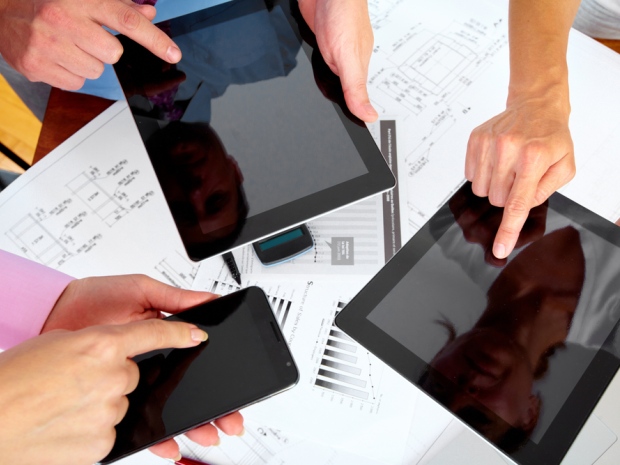Why tablets are winning

Comparing a seven-year-old Mac Pro to a current MacBook Air may not seem fair or wise. After all, isn't faster always better?

Not for me. I was happy with the performance of the Mac Pro, although I did upgrade it. I craved more flexibility, not performance, which is why geeks are mostly surprised by the popularity of tablets — and I'm not.
Case in point: Video editing. The reason I had the big Mac Pro was to edit video, although its stability — an Intel workstation motherboard, ECC RAM, ample cooling — haven't been equalled by any newer Mac I've used.
While I hire a professional for video editing now, I still do some at home. And I really can't tell the difference between editing on the Mac Pro and editing on the MacBook Air.
That's progress.
Specsmanship
The Mac Pro had 2 dual-core 2.66GHz Xeon processors, an upgraded video card, a 10K RPM WD velociraptor disk, a two-disk RAID, and 10GB of ECC RAM. The new MacBook Air has a dual-core i7 processor running at 2GHz, Intel's HD 4000 graphics, a 500GB SSD, and an external four-drive Thunderbolt array.
The MacBook Air also has a 2,560x1,440 Thunderbolt display and USB 3.0 ports. And when it's time to travel, nothing beats slipping the MacBook Air into a briefcase — no syncing!
Geekbench scores
The Mac Pro with four cores achieved a Geekbench score of 5,873 in 64-bit mode. The dual core i7 MacBook Air achieved 7,644, a 30 percent increase over it it's hulking predecessor.
Read this
While the MacBook Air is only dual core, Intel's Hyperthreading gives it two more virtual cores. Looking at my system's test results demonstrates that for many benchmarks it really works, giving the system the performance of more than two physical cores.
Other MacBook Air features play a role. The system bus speed is significantly higher, the L1 cache — which the MacPro didn't have — is infinitely larger, the L2 cache is the same size, but it's on-chip. Main memory is two times faster, the standard VRAM is larger, and the total system bandwidth is significantly greater.
I have to make do with 8GB of RAM on the MacBook Air. But the usually — though not always — snappy 500GB SSD reduces paging overhead, so the lesser capacity is rarely noticeable.
If you compare the size of the motherboards on the two systems, well, there is no comparison. The MacBook Air motherboard is tiny,smaller than an iPhone. There's a lot less fan noise as well.
All this in a system that weighs 8 percent of the original. And costs less.
The Storage Bits take
It took me a while to believe that my tiny MacBook Air could actually be faster than my workhorse Mac Pro. Was my memory playing tricks on me?
But when I sat down and compared specs, it became clear that in the last six years, the pace of technology has given me my Mac Pro in a slim, stylish, 3-pound case with a display, the keyboard, and a very functional trackpad to boot.
Our perception of what we need in a computer changes much more slowly than the actual technology. That's why tablets are popular: We're able to put the technology that people need and want into lightweight, portable, and functional systems. They have more power, ease of use, and battery life than most notebooks did 10 years ago. No wonder people love 'em!
While desktops and notebooks aren't going away, the tablet will be the leading platform for the next eight to 10 years. Perhaps in 2018, they'll even be fast enough for me.
Comments welcome. Have you switched to a smaller but faster system lately? Fun fact (for me, anyway): my #1 YouTube video has over 320,000 views.